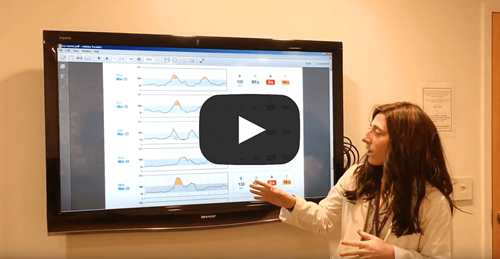Practical Considerations for Loaner Continuous Blood Glucose Monitors
Sep 16, 2019, 15:45 PM
by Kathleen Stanley, CDE, RD, LD, MSEd, BC-ADM, MLDE
Diabetes Education Coordinator, Baptist Health Lexington, Lexington, KY
Continuous blood glucose monitoring (CGM) systems have become a growing trend amongst people with diabetes and clinicians. These devices provide real-time data on estimated blood glucose values and are generally prescribed by a provider, purchased by an individual, and set up with blood glucose goal parameters by a clinician. They’re about the size of an Oreo and are generally inserted on the back of the arm and allow the user to see glucose readings on either a smart phone or a handheld device.
With CGMs seen as increasingly effective tools, providers have started using loaner devices. This method shortens the time required to identify glucose trends in individuals they may only see a few times a year. These short-term devices allow providers to prescribe treatments that can be adjusted effectively without the individual having to make a full purchase of the CGM system.
The loaner device itself is applied to an individual by the provider to operate for a certain number of days. However, the individual will not be able to see the readings while wearing the device. The wearer must return it to the provider to have the glucose readings extracted from the device.
I recently called a client to schedule them for a class. When I asked about home blood glucose testing, he said “I don’t need to test, I got that thing you put on your arm from my doctor for 3 days.” He was a man with type 2 diabetes for 6 years who had a rise in his A1C. His comment made me pause.
I suppose in the near future, he is 100% right - we will be using alternative testing devices for comfort, convenience, and for the wealth of information they provide. I can still recall teaching clients to check their urine or blood using site-based/color changing test strips - I’m not the only one right? However, this person felt that his 3-day blinded wear was enough information for the next 3 months, until his next visit.
As more providers take advantage of loaner CGM devices, there are several issues that could arise. First, the validity of the devices for short term wear. People with diabetes may go on “best behavior” when being “monitored” which can provide data that doesn’t really help in long term management.
Upon seeing an individual’s numbers, providers may be quick to act on just that information alone, similar to isolating A1C for decision making without considering the many lifestyle issues that exist.
The diabetes education and care specialist can be a valuable resource to providers who are using loaner CGM devices prior to the wear by establishing a baseline self-care assessment and instructing the person on data keeping during the loan (i.e. using a food diary). Even more so, a specialist can help providers with interpretation of the data by sharing feedback about lifestyle factors and decision-making skills. Together, the provider and specialist can make the most of this new technology for better clinical outcomes.
Currently, there is limited evidence-based practice guidelines for loaner CGM device methods. But until these CGM devices are truly continuous,365/24/7, and available for all, we need to keep talking about meters too. For all we know that “thing on my arm” maybe replaced with some other exciting new device. Who knows what technology we will be armed with next?
Want more on CGM? 2019 Educator of the Year Diana Isaacs shares practical tips for interpreting CGM data.

Explore more CGM-related news, journal articles, education and more at danatech.org.